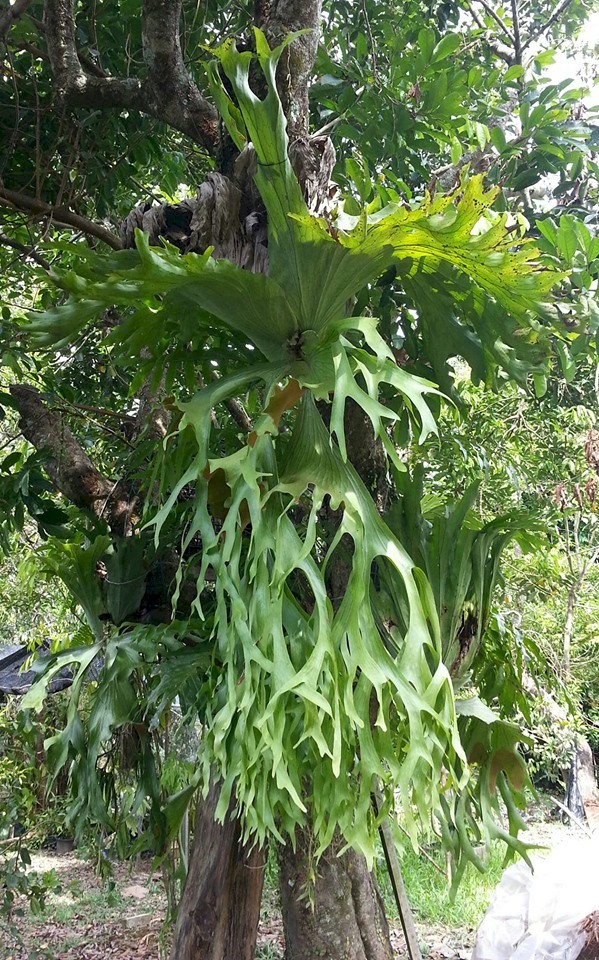|
||||||||||||||||||||||||||||||||||||||||||||||||||||||||
|
Photo: Zulkifli Md Isa on Malaysia Platycerium. Exotic Plant Society |
||||||||||||||||||||||||||||||||||||||||||||||||||||||||
|
P. holttumii is from Southeast Asia and Malaysia. It is a large
platy like P. superbum, P. grande, P. wandaei. It differs from the first two by having fertile
fronds with two lobes with spore patches, one smaller (labeled A in photo above) and
elevated, and one larger and hanging down (labeled B). Roy Vail reports that in the 1970 paper which separated P. grande and P. superbum, Joncheere and Hennipman described the P. holttumii as a new species. It is named for Dr R. E., Holttum of Kew, New England, author of "A Revised Flora of Malaya.
Roy Vail located three people who felt branching of the rhizome occasionally happens in P. holttumii. One showed a large bulge under the shields near the bud which was thought to be a rhizome branch growing trapped underneath. Another had a set of shields with a rhizome and bud which had fallen off a large plant, and was mounted as a separate new plant. The third wrote of a P. holttumii pup. Hobbyists should grow P. holttumii in bright locations with high humidity for best results. During growing seasons, water more frequently and keep it extra moist. P. holltumii can not be expected to tolerate the low temperatures as P. superbum, however they should be treated the same. Today, the main source may be imports of small samples from Thailand. When received, Roy Vail suggests treating with terramycin to prevent any bacteria.
|
||||||||||||||||||||||||||||||||||||||||||||||||||||||||
|
The photo on the left is a mature P. holttumii presented on Facebook by Zulkifli Md Isa of the Malaysian Platycerium/ Exotic Plants Society. The plant looks a lot like a P. wandae only there are no frills around the bud. There are several fertile fronds. Each fertile frond has two lobes with spore patches. One is smaller and elevated while the second is larger and on a lobe below the smaller spore patch. The shield fronds open up wide to catch falling debris which the plant composts for |
||||||||||||||||||||||||||||||||||||||||||||||||||||||||
|
||||||||||||||||||||||||||||||||||||||||||||||||||||||||
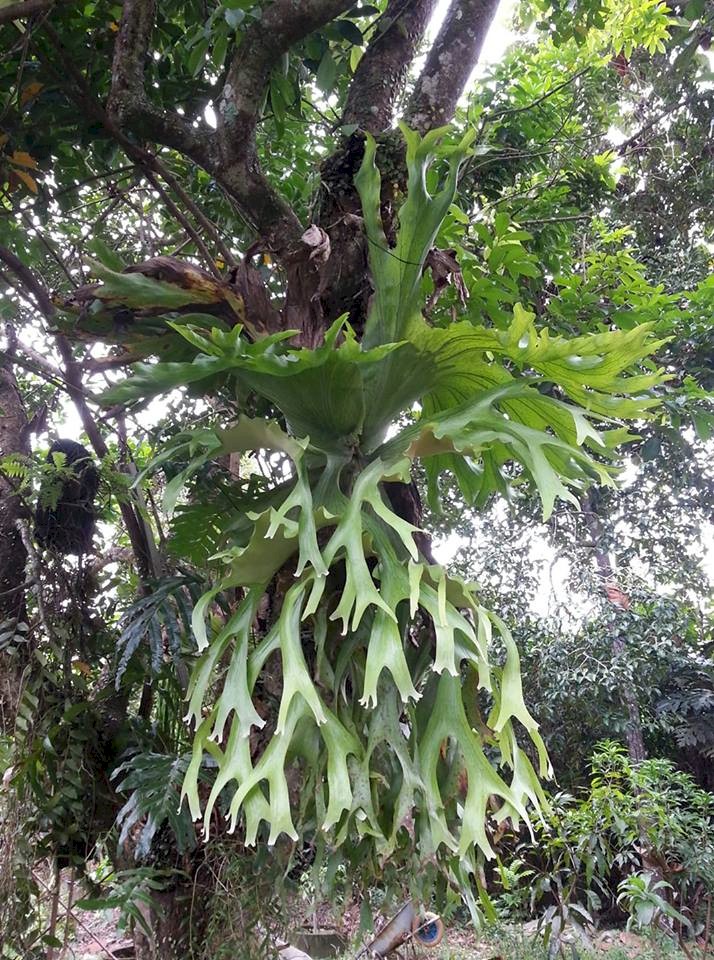
Found this photo on Facebook, in the Planet Platycerium
page. Notice how the shield fronds are almost horizontal collecting sunlight and anything else fortunate to fall in to this composting machine. The fertile fronds hang down and there are several fertile fronds. Each fertile frond has two lobes with spore patches underneath. There is a smaller elevated lobe and a larger lower lobe on each fertile frond. The P. holtumii is very similar in appearance to a P. wandae except the P. wandae has frills around the bud. |
||||||||||||||||||||||||||||||||||||||||||||||||||||||||
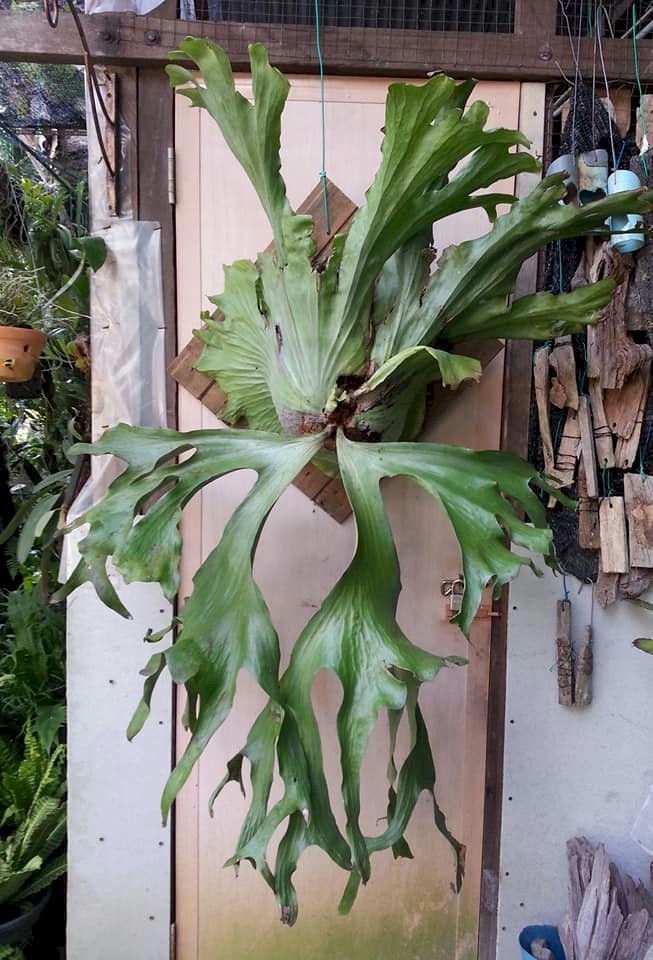
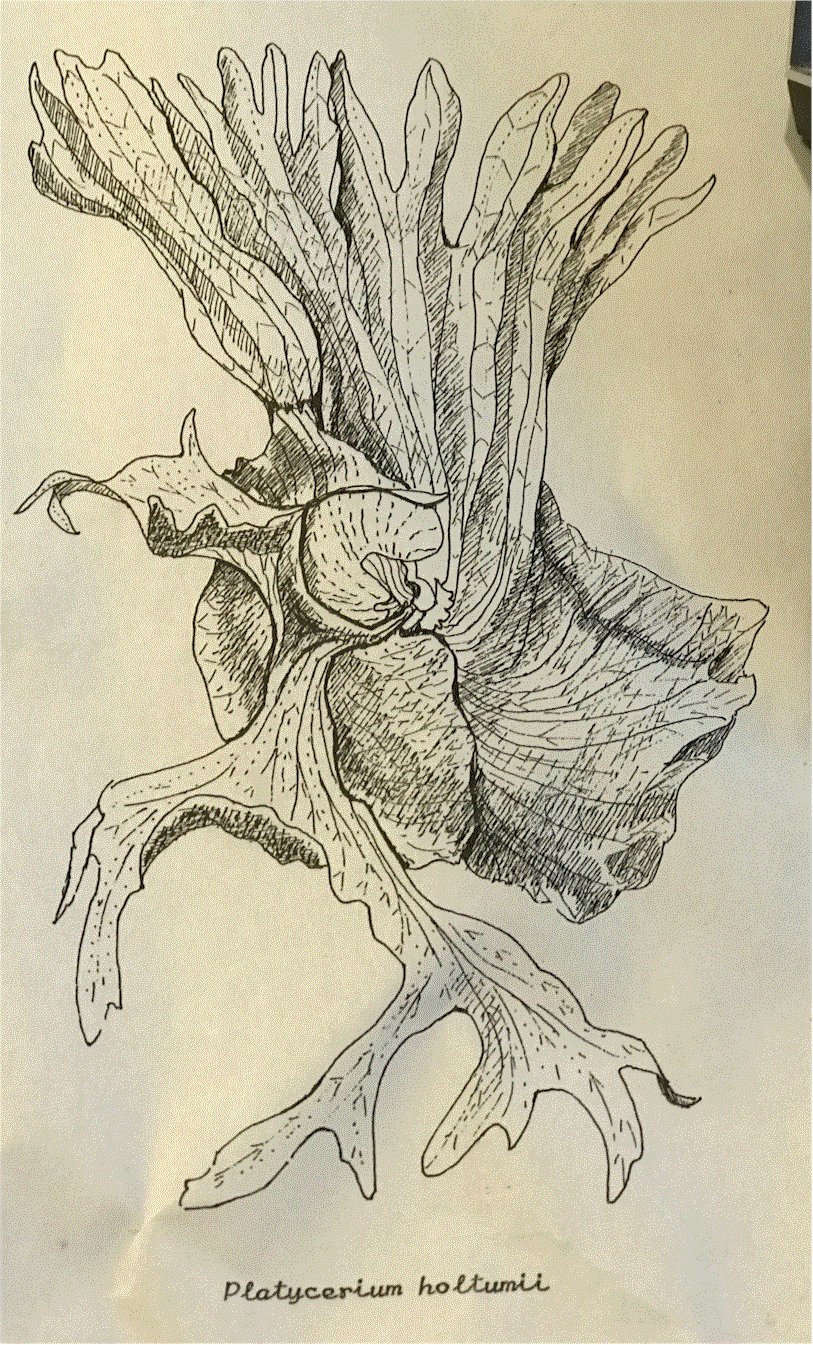
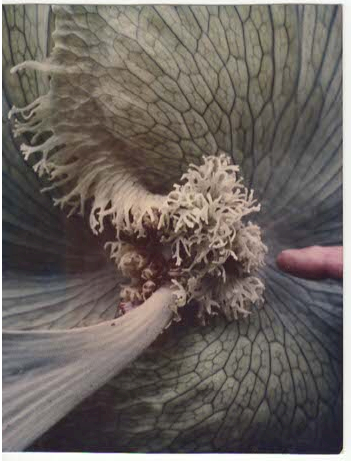 In
practice it can be very difficult to tell P. holttumii from
P. wandae. Since their fertile fronds are about the same
shape. The lack of little frills on the shields at the bud
differentiate the P. holttumii from P. wandae, as depicted in the P. grande photo on the right
with the little frills. Roy Vail points out that in a P. wandae with old
shields, its little frills may die back causing it to look like P.
holttumii until new shields form. It is also difficult to
tell P. grande, P. superbum, P. wandae and P. holttumii
apart when young
In
practice it can be very difficult to tell P. holttumii from
P. wandae. Since their fertile fronds are about the same
shape. The lack of little frills on the shields at the bud
differentiate the P. holttumii from P. wandae, as depicted in the P. grande photo on the right
with the little frills. Roy Vail points out that in a P. wandae with old
shields, its little frills may die back causing it to look like P.
holttumii until new shields form. It is also difficult to
tell P. grande, P. superbum, P. wandae and P. holttumii
apart when young 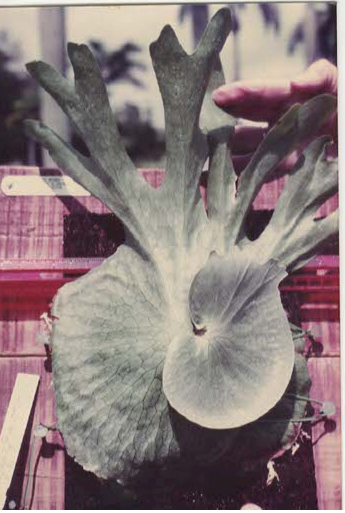 Roy
Vail reports that in the early 1970 Robert Oman in Miami received a
group of 50 small plants from California labeled, P. holttumii
sporelings. When mature their fertile fronds developed unusual
shapes. Of the starting 50, 44 went to Puerto Rico. Of the
remaining, 6, one of the offspring's is in the trade as Glasshouse
Works and pictured on the left. Looks a lot like P. grande,
P. superbum, or P. wandae when young and before fertile fronds form.
Roy
Vail reports that in the early 1970 Robert Oman in Miami received a
group of 50 small plants from California labeled, P. holttumii
sporelings. When mature their fertile fronds developed unusual
shapes. Of the starting 50, 44 went to Puerto Rico. Of the
remaining, 6, one of the offspring's is in the trade as Glasshouse
Works and pictured on the left. Looks a lot like P. grande,
P. superbum, or P. wandae when young and before fertile fronds form.